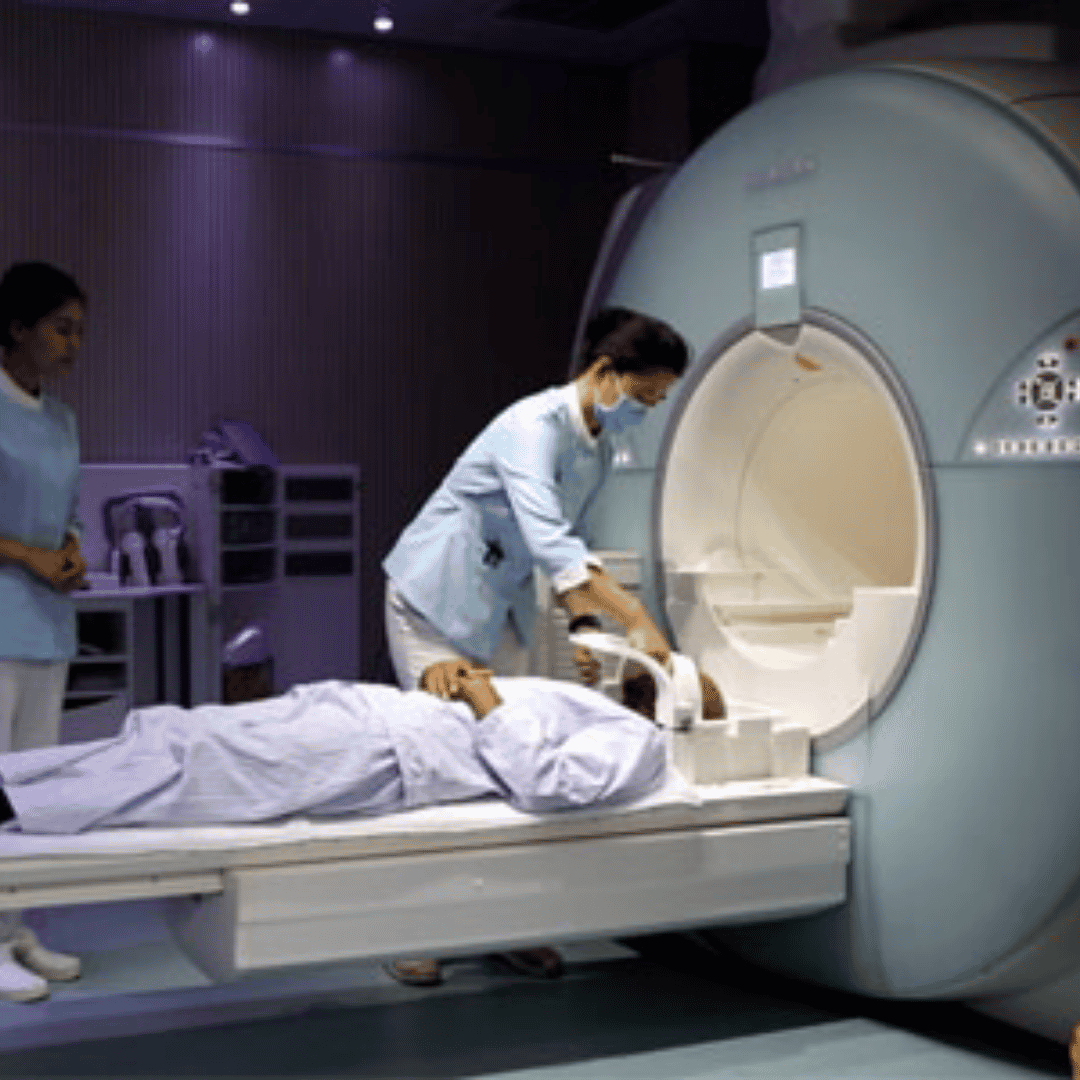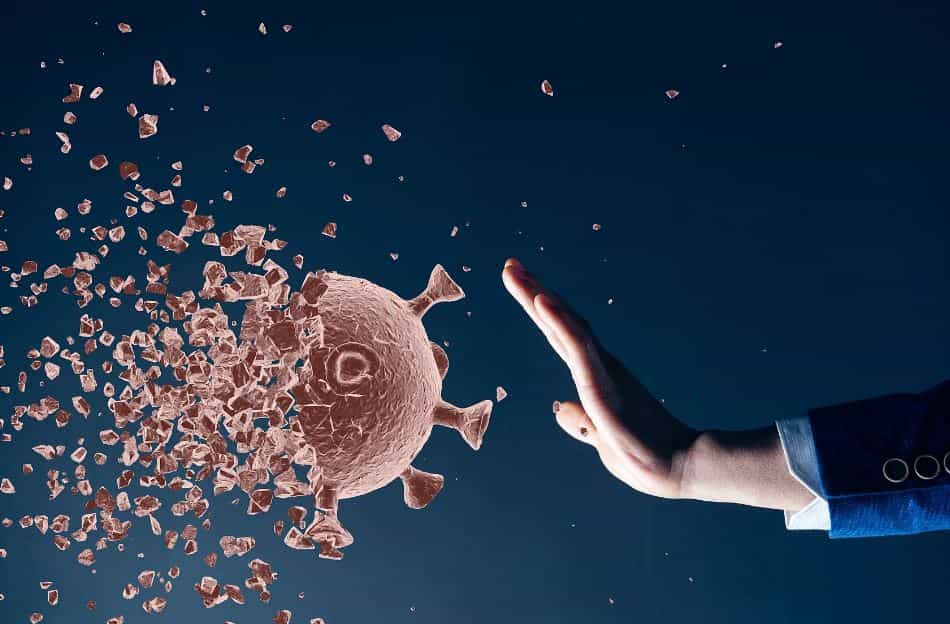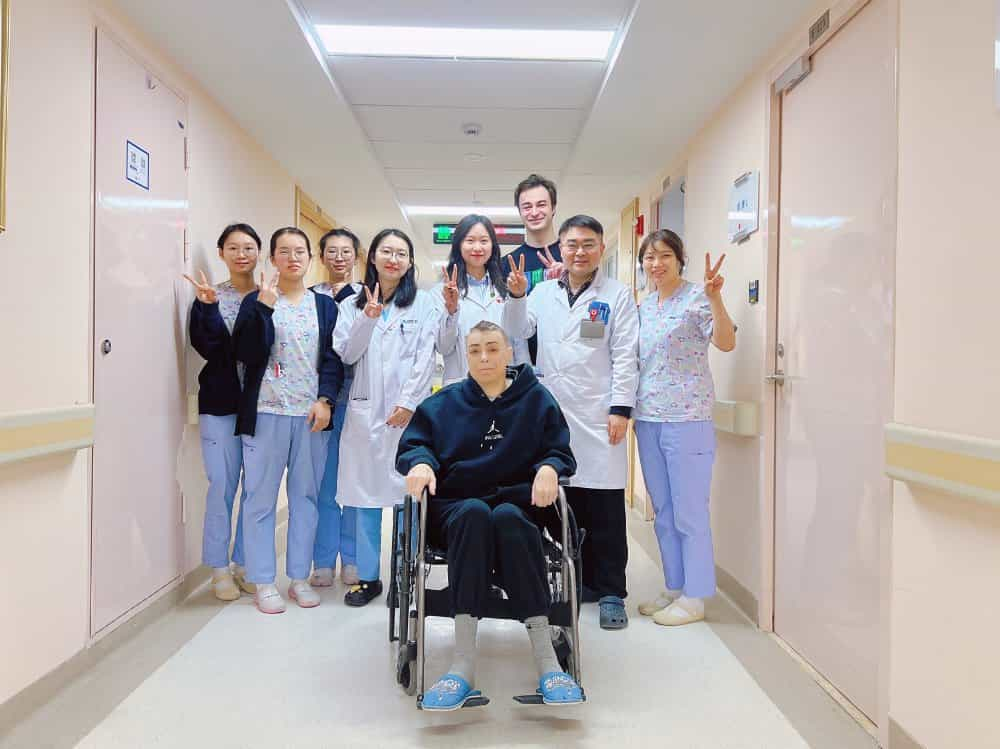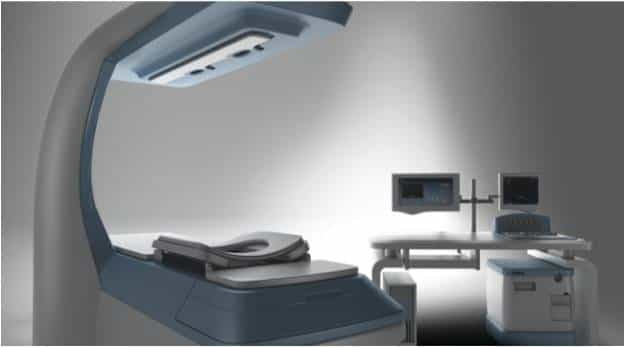
Pancreatic Cancer and High-Intensity Focused Ultrasound Ablation
The early diagnosis of pancreatic cancer is very difficult. It is a highly malignant cancer that usually has a poor prognosis. The National Institutes of Health reports that the 1-year survival rate for pancreatic cancer is only 8%, the 5-year survival rate is less than 5%, and the average life expectancy is 2 to 3 months. Most patients are often diagnosed only at the advanced stage of the disease, as the symptoms of pancreatic cancer are often only noticeable when the disease has progressed. The symptoms include abdominal pain, unexplained weight loss, and difficulty in digesting fatty foods. At the advanced stage, the symptoms of severe lower back pain do dramatically affect the quality of the patient’s life and the use of analgesic drugs may provide some relief, but usually is not sufficient. Furthermore, at the advanced stage of this disease, the option of surgery may not be viable and in most of the cases, the commonly used interventional therapies and chemotherapy bring with them many undesirable side effects and toxicity.
The newly introduced HIFU non-invasive-ultrasound ablation at the Beijing Puhua International Hospital (BPIH) has significant advantages over the commonly used procedures in treating pancreatic cancer.
For patients with early-stage pancreatic cancer, HIFU can completely ablate the lesion. For patients with middle or advanced stage pancreatic cancer, HIFU therapy can immediately alleviate the severe abdominal and lower back pain caused by pancreatic cancer.
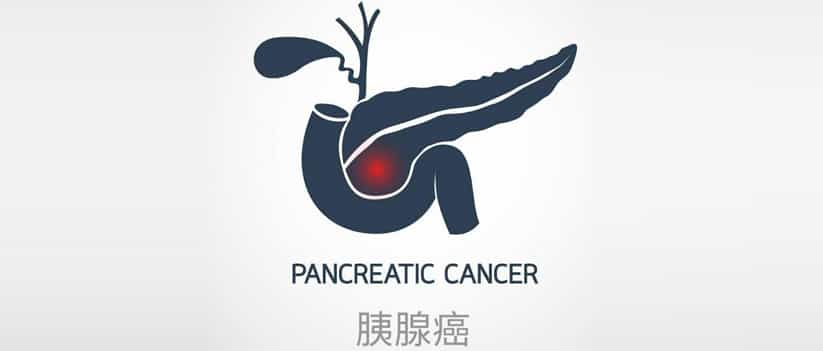
What is HIFU?
HIFU is short for high-intensity focused ultrasound ablation and it represents the next generation of minimally invasive treatments for cancer.
HIFU utilizes ultrasound's good penetrability, and intensity as the ultrasound beam travels through the transducer probe and is focused into a point, precisely targeting the tumor, which is heated up between 60 to 100 Degrees Celsius. The cellular proteins of the tumor coagulate leading to tumor ablation (thermal destruction of tissue), without surrounding tissue being harmed. The dead tumor tissues are then gradually reabsorbed by the body.
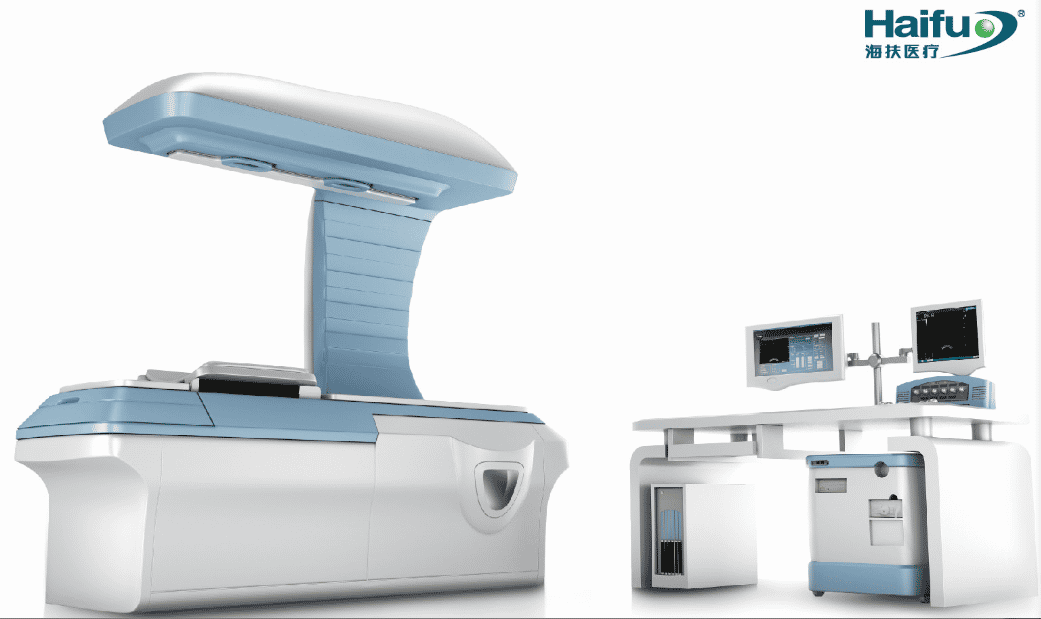
In the case of an inoperable pancreatic cancer, HIFU treatment can effectively reduce tumor burden and more interestingly reduced tumor pain through tissue denervation, tumor mass reduction, and neuromodulation, thereby prolonging the patient's survival and improving the quality of life.
Following treatment, 88% of patients obtained different degrees of pain relief,
without serious complications such as upper gastrointestinal hemorrhage or gastric-intestinal perforation and enhanced MRI scans reveal effective tissue ablation in the HIFU therapy area.
After conducting extensive research and development, HIFU treatment has become widely accepted and promoted in the treatment of pancreatic cancer.
Due to its non-invasive nature, surgery has in most cases got to be avoided and most patient only requires one HIFU treatment to achieve the desired result of tumor destruction. Amazingly, after only one day of receiving treatment, most patients can return back home, as there are no after effects impacting the patients’ health.
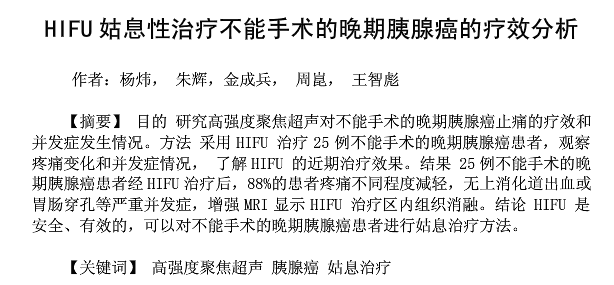
Comparison of HIFU and standard treatment options
Unfortunately, 70% - 80% of pancreatic cancer patients are not diagnosed in the early stage of the condition. When the diagnosis of pancreatic cancer occurs, the patient usually has already progressed to the middle or advanced stage of this condition, with a usual life expectancy of only 3-6 months. Once diagnosed, less than 10% of patients with pancreatic cancer are suitable candidates for surgery, which is traumatic and risky and usually only extends the patient’s life by only up to 9 months. Even if combined with radiotherapy and chemotherapy, the survival period can usually only be extended by an additional 0.5-1 months. Standard treatment options are costly and ineffective, as they hardly extend the life expectancy and provide pain relief for the patient.
However, almost all pancreatic cancer patients are eligible for the non-invasive, low-risk HIFU treatment.
According to our statistics, patients’ survival can be extended from standard 3 to 6 months to 1 to 2 years and an impressive 98% of patients gaining noticeable improvements in pain relief and life extension after receiving HIFU treatment!
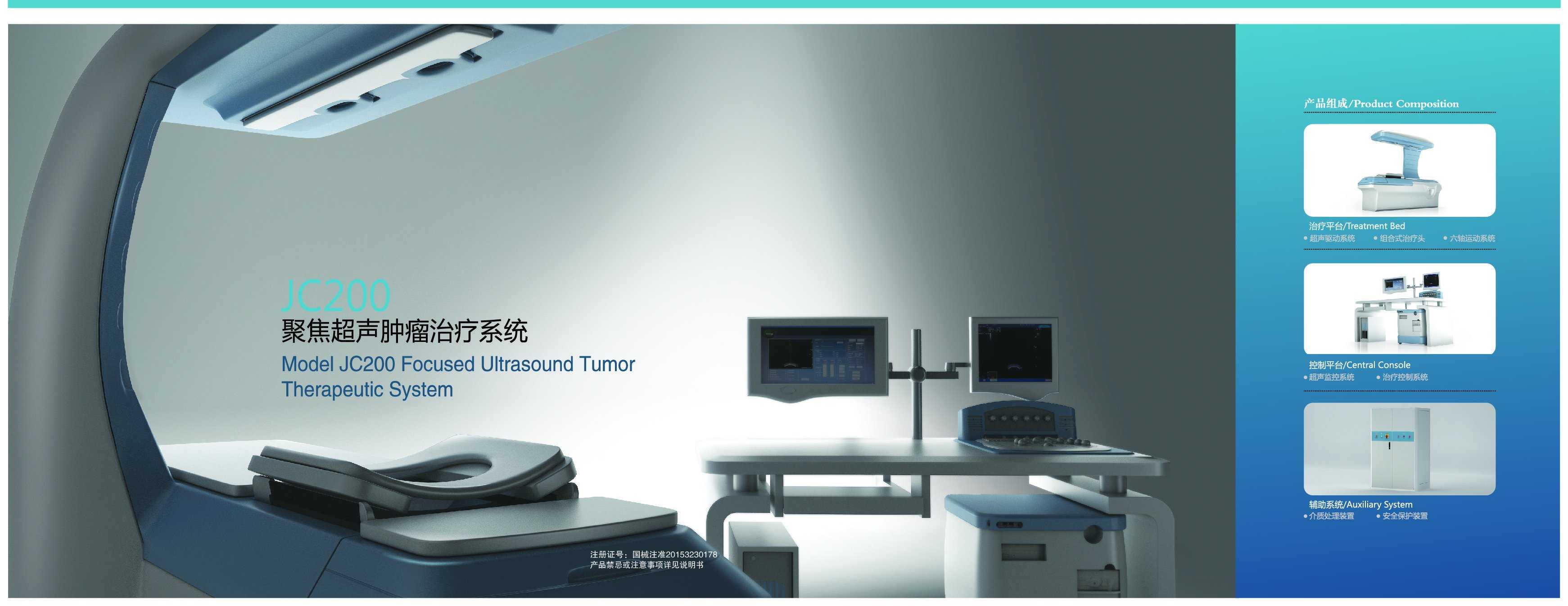 Advantages of HIFU Ultrasound Ablation Therapy
Advantages of HIFU Ultrasound Ablation Therapy
- Noninvasive treatment to preserve organs and structures, with no blood transfusion and no radiation.
- 3D targeting module defines the boundary of tumors and calculates a 3D therapeutic plan, constantly monitoring the tissue responses and adjusting the therapeutic parameters accordingly, achieving an individual treatment protocol.
- Conformal and precise ablation. With plus and minus 1mm accumulative error, the accurate movement of the 6-dimensional motion system can ablate tumors adjacent to major vessels or nerves safely.
- In most cases, only one treatment session is required and there are no limitations due to tumor size and shape, The margin between treated and untreated tissue can be as narrow as 6 to 10 cells wide.
- Real-time color doppler ultrasound-guided therapy with digital quantitative analysis allows monitoring during the whole treatment and provides an immediate ultrasound image to evaluate the overall result following treatment.
- The energy of the focal region is high enough to induce an immediate thermal toxicity (temperature above 56Derees Celsius) which will cause irreversible coagulative necrosis.
- Activation of the immune system, as the necrotic tissue is disposed of by the body’s own healing response.
If you would love to learn more about HIFU Treatment for Cancer you can always get a free quote from the clinic using the button below!



.png)

